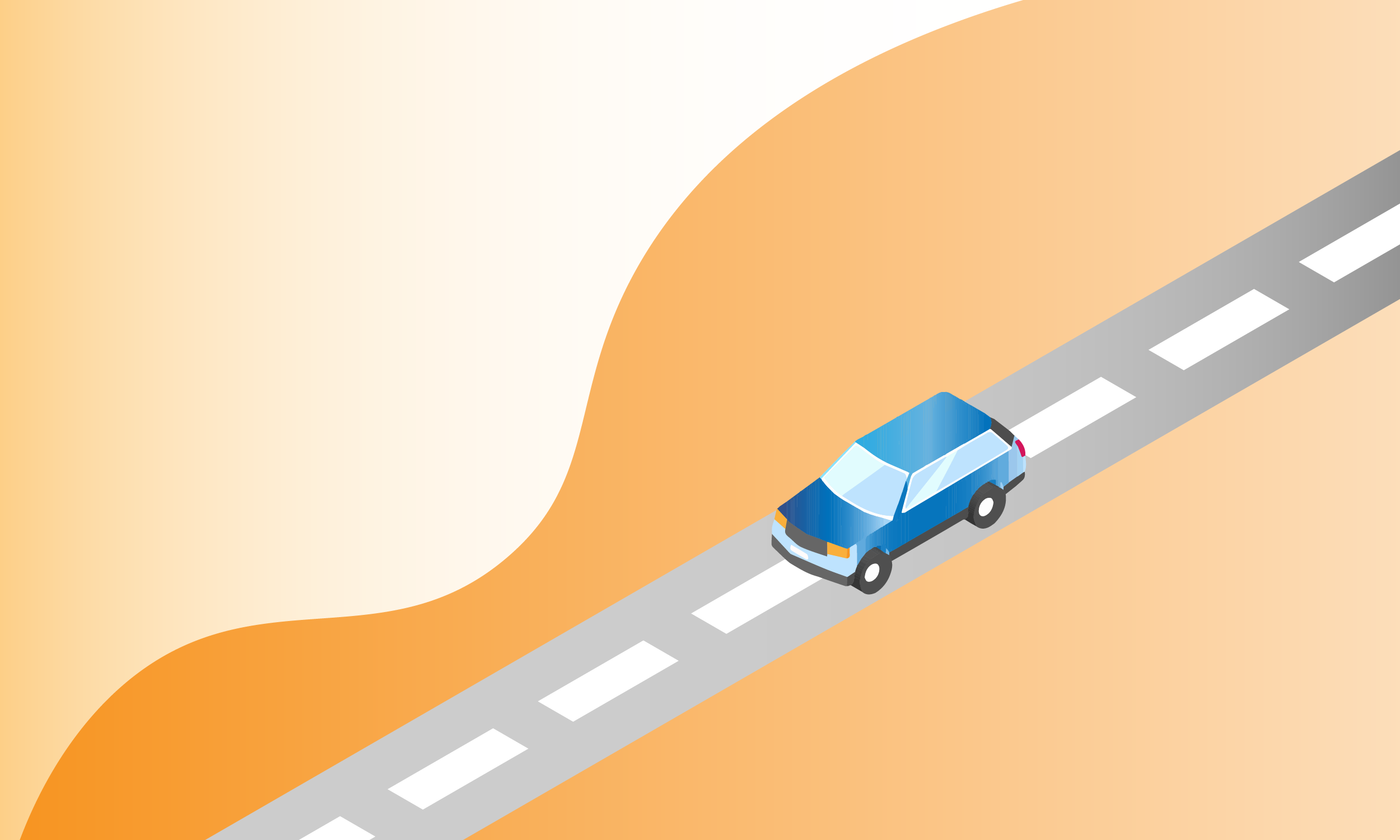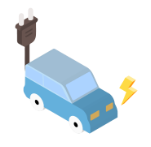
Electric Vehicle Guide
1. EV Range and Charging
1. Factors Impacting an EV’s Range
Driving style. Smooth is good. This means gentle acceleration, gradual braking, and looking ahead to avoid sudden stops.
Driving speed. We recommend 60-65 miles p/h as optimal cruising speed on motorway (higher speeds will use up more power)
Use of auxiliary equipment will drain the battery. Climate control, radio, phone charging (even windscreen wipers) are all powered from the same source in an EV.
Weather conditions and outside temperature will also impact effective range (icy conditions can reduce range).
2. There are 3 main types of EV charging: Rapid, Fast and Slow
Rapid (DC Fast Charging): These are the fastest public chargers, often found at service stations and dedicated charging hubs. Ultra-rapid charging are increasingly common and can add 100s of miles of range in 20-30 minutes. Always prioritise these.
Fast (AC Charging): These are common for public carparks. Only use Fast chargers if the vehicle is not compatible with Rapid chargers
The higher the power rating (kW), the faster the charging time
3. There are different types of plug sockets for Rapid chargers:
CHAdeMO
What it is: An older rapid charging standard, mainly for Japanese EVs.
Key Features:
Declining Use: It's rarely installed for new chargers in the UK, and new EVs typically don't use it as their main rapid charging port.
Used by: Mostly older models like the Nissan Leaf and Mitsubishi Outlander PHEV.
CCS (Combined Charging System)
What it is: CCS (specifically CCS2) is the dominant rapid charging standard in the UK and Europe.
Key Features:
Standard in the UK: The vast majority of new EVs sold in the UK use the CCS connector for rapid charging.
High Power: CCS chargers in the UK offer a wide range of power outputs, from 50 kW to ultra-rapid chargers exceeding 350 kW.
Widespread Network: The UK has a growing network of CCS rapid chargers at motorway service areas & public charging hubs
Common Models in the UK that use CCS:
Audi: e-tron, Q4 e-tron, Q6 e-tron, e-tron GT, and all newer Audi EVs.
BMW: i3, i4, i5, i7, iX, iX1, iX2, iX3 and all newer BMW EVs.
BYD: (Various models)
Cupra: Born
Ford: Mustang Mach-E, Explorer EV
Hyundai: IONIQ 5, IONIQ 6, Kona Electric (newer models), IONIQ 5 N, Inster
Jaguar: I-Pace
Kia: EV6, EV9, Niro EV, Soul EV (newer models)
Mercedes-Benz: EQE, EQS, EQB, EQA, EQV, EQG
MG: ZS EV, MG4 EV, MG5 EV
Nissan: Ariya (for DC fast charging)
Polestar: All models
Porsche: Taycan, Macan Electric
Renault: Megane E-Tech Electric
Rivian: R1T, R1S
Skoda: Enyaq iV
Subaru: Solterra
Toyota: bZ4X
Vauxhall/Opel: Corsa Electric, Mokka Electric, Astra Electric, Grandland Electric
Volkswagen: ID.3, ID.4, ID.5, ID.7, ID. Buzz, ID.2, ID.2 SUV
Volvo: EX30, EX90, XC40 Recharge, C40 Recharge
Type 2 (AC Charging)
What it is: The standard AC charging connector in the UK and Europe.
Key Features:
Standard in EV cars: Almost all new and modern EVs sold in the UK come equipped with a Type 2 port for AC charging.
Availability: The majority of public AC charging points in the UK will have a Type 2 socket, or a tethered cable with a Type 2 plug.
Tesla Supercharger Network
What it is: Tesla's charging network.
Key Features:
Tesla-Specific: Primarily for Tesla vehicles.
High Power: Superchargers in the UK offer significant power, with V3 chargers capable of up to 250 kW.
Models that use the Tesla Supercharger Network in the UK:
All Tesla models: Model 3, Model S, Model X, Model Y.
2. Locating Charging Stations and Charging Ports
1. Locating Charging Stations
There is a huge number of companies providing charging stations in the UK but there are currently no one-stop solutions available when seeking charging stations. The best options are listed below, but they do not provide live information on operational status nor current availability:
2. Locating Charging Ports:
Rear Quarter Panel (Most Common):
Often located on the same side as a traditional fuel flap, or the opposite.
Examples: Many German manufacturers (VW, Audi, Mercedes-Benz, BMW) often place their ports on the rear right.
Front Wing / Fender:
Located on the front side of the car, above or near the wheel arch.
Examples: Some Hyundai Kona models (older versions), BYD Atto 3, Citroën eC3.
Front (Under a Badge or Flap in the Grille/Nose):
Often hidden behind a retractable badge or a small flap in the front grille or "frunk" area.
Examples: Older Nissan Leaf models, Renault Zoe, MG Comet, Tata Punch EV.
Rear (Centre or Bumper):
Less common, but some models place the port centrally at the rear, often above the licence plate or on the bumper.
Examples: Kia EV6 (rear-centre), Porsche Boxster EV (future models, rear bumper).
Always check the vehicle's manual or spend a few moments locating the charging port before your first charge.
When handing over an EV to a customer ensure you show them where the cables are stored and demonstrate how to plug them in.
3. Vehicle charging expenses
If you're charging an EV and haven't been issued a specific charging card, you can submit your charging expenses directly through the Engineius App.
You'll also be reimbursed for the time you spend charging the vehicle. This is paid at a rate of £3.75 for every 15 minutes of charging. For example, a 60-minute charging session would result in a £15 payment.
Please note: Reimbursement for charging time only applies while the vehicle is actively charging.
4. BP Pulse
BP Pulse is one the largest EV networks in the UK. It operates on a flexible basis, allowing pay-as-you-go access from your phone via their app, or their contactless card payments.
Recommended for drivers: Download the BP Pulse app to your smartphone. This app provides a map function that helps you location charging points, check their operational status and manage charging sessions.
How to start a charge
1. Locate the Station: Use the BP Pulse app (or a mapping app like Zap-Map) to find a BP Pulse rapid charger. Check its operational status and availability before travelling to the location.
2. Connect your vehicle: Plus the appropriate charging cable securely into your vehicles charging port.
3. Choose Payment Method on Charger Screen: The charger screen will guide you through the process
Contactless: Select the connector on the screen, follow the prompts, and tap your contactless card or mobile payment device when instructed.
BP Pulse App: Open the BP Pulse app on your smartphone, locate the specific charger (often by its ID number displayed on the unit), select the correct socket, and tap "Start Charge".
BP Pulse RFID Card: If you have a physical BP Pulse RFID card, select the card option on the screen (if available) and then tap your card on the reader.
4. Charging Commences: Once checks are complete, the station screen will display the charging status, showing information such as charging power (kW), duration, and energy delivered (kWh).
5. End Session: It’s crucial to end the session correctly to release the cable and stop payment. You can do this via the BP Pulse App or the Charger Screen.
6. Unplug Vehicle: Ensure the charging session has ended via the app or charger unit before attempting to unplug. The cable lock will then release and can be removed.
Troubleshooting cable release
Unlock Car: The vehicle may lock the charging cable in place for security, try locking and unlocking the car with the key fob.
Vehicle Release Button: Some vehicles have an internal button (e.g., on the dashboard, or in the boot) to manually release the charging cable. Check the car's manual.
Contact Support: If all else fails, call the BP Pulse helpline (0800 464 3444) for assistance.
5. Electroverse
Electroverse, created by Octopus Energy, aims to simplify public EV charging by offering access to a vast network of chargers across the UK and Europe through a single app and RFID card.
Recommended for drivers: Download the Electroverse app to your smartphone. This app reduces the need for multiple apps and cards from different charging providers. Order the free Electrocard to initiate charging sessions, this is useful in areas with poor phone signal.
How to start a charge
1. Locate the Station: Use the Electroverse app (or a mapping app like Zap-Map) to find a suitable rapid charger. Check its operational status and availability before travelling to the location.
2. Connect your vehicle: Plus the appropriate charging cable securely into your vehicles charging port.
3. Choose Payment Method on Charger Screen: The charger screen will guide you through the process
Contactless: Select the connector on the screen, follow the prompts, and tap your contactless card or mobile payment device when instructed.
Electroverse App: Open the Electroverse app on your smartphone, locate the specific charger (often by its ID number displayed on the unit) and tap "Start Charge".
Electroverse RFID Card: If you have a physical Electroverse RFID card, select the card option on the screen (if available) and then tap your card on the reader.
4. Charging Commences: Once checks are complete, the station screen will display the charging status, showing information such as charging power (kW), duration, and energy delivered (kWh).
5. End Session: It’s crucial to end the session correctly to release the cable and stop payment. You can do this via the Electroverse App, Charger Screen or using the Electroverse RFID card (tap the card on the reader again).
6. Unplug Vehicle: Ensure the charging session has ended via the app or charger unit before attempting to unplug. The cable lock will then release and can be removed.
6. Charging Companies
If you need assistance with a public charger, knowing who to contact is crucial. Always check the physical charging unit itself. It will always display a unique ID for the charger and the specific helpline number for that unit, which is the most reliable contact in case of a problem. Here's a list of key UK charging networks and their contact details:
BP Pulse:
Phone: 0800 464 3444 (for general enquiries, check the Motability link provided in the search results) or 0344 338 0333 (for bp pulse LIVE event-related enquiries).
Note: BP Pulse customer support can also be reached through an online help form on their website.
Shell Recharge:
Phone: +44 (0) 203 868 1036 (24/7 emergency support for technical issues).
Email: customerservice@shellrecharge.com
ChargePlace Scotland:
Phone: 0141 648 0750 (24/7 helpline).
Email: admin@chargeplacescotland.org
InstaVolt:
Phone: 0808 281 4444 (24/7 driver support).
General enquiries: 01256 305900
Email: info@instavolt.co.uk
Osprey Charging:
Phone: 0800 0588 400 (24hr helpline).
Email: support@ospreycharging.co.uk
Ecotricity (Electric Highway):
Phone: 0145 376 1455 (Electric Highway team).
GeniePoint:
Phone: 0800 999 4240 (24/7 driver support).
Email: geniesupport@equans.com
7. Helpful Links
Driving an EV test
Please make sure you have covered all EV content before starting your test.
For further details on driving an EV, please contact us on 0121 481 2111.
FAQs
-
All vehicles also come equipped with a polar plus card, which can be used to charge at any charge points on the Polar or Charge your Car networks.
Polar: Can be used with the polar plus card included in the vehicle.
Charge Your Car: Can be used with the polar plus card included in the vehicle.
Tesla Charging: Can be used for Tesla Models only. For Engineius, if Polar/Tesla charge points are not available:
Instavolt: Can be used via contactless payments. Can not be used for Renault Zoe ZE40.
Other Networks: Charge stations can only be used if they offer contactless payment.


